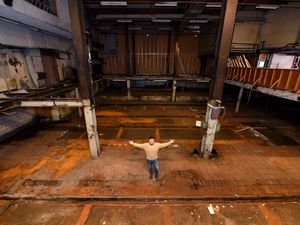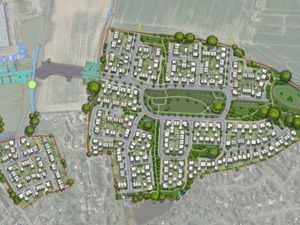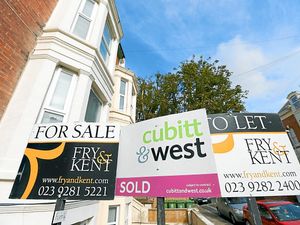Average house prices in the region are set to rise, but 2023 will be tough
Average house prices in the region will see a significant rise over the next five years, despite property values being expected to fall dramatically in 2023, according to a new forecast.

Property firm Savills have given an upbeat prediction for the housing market in the West Midlands.
And it says out region is also expected to “more resilient” than many other parts of the country, particularly London where the slump is expected to have a bigger impact.
As borrowing costs rise, Savills say the housing market will diverge between the mortgage-dependent ‘mainstream’ markets and the luxury ‘prime’ markets, which represents broadly the top 10 per cent by value in each region.
After more than two years of strong growth, the average UK house price is expected to fall by 10 per cent in 2023 when interest rates peak, but the prime markets will see smaller falls and outperform over the five-year forecast period.
Peter Daborn, director in the residential sales team at Savills in our region, said: “We anticipate a growing divergence between cash and equity rich or cash buyers and other groups in their ability to transact, and between the mainstream market and prime markets where housing wealth is most concentrated.”

Interest rates are expected to gradually ease back from the middle of 2024 and Savills is forecasting values will begin to recover and the average house price across the West Midlands, Staffordshire and Shropshire will rise by a net figure of 8.9 per cent in nominal terms over the next five years. That would be 2.7 per cent higher than the projected UK average.
This is expected to be accompanied by a fall in housing transactions at a nationwide level, as first-time buyers and buy-to-let investors bear the brunt of increased affordability pressures next year when Bank base rate is expected to peak at four per cent.
Mr Daborn said people are more cautious as the UK enters recession. There is a realisation that interest rates are on the up and the cost of living crisis and uncertainty politically has also dampened demand.
But he said: “There are several factors that will insulate the market from the risk of a bigger downturn as seen after the financial crisis. Borrowers who haven’t locked into five-year fixed rates had their affordability heavily stress-tested until August this year.
“This, combined with relatively modest unemployment expectations and signs that lenders are looking to work with existing borrowers to help them manage their household finances, should limit the amount of forced-sale stock hitting the market in 2023.
“And, looking longer term, the Bank of England’s relaxation of mortgage regulation over the summer has substantially enhanced the prospect of a price recovery – but only as and when interest rates start to be reduced and inflationary pressures in the economy ease.
“Historical trends suggest that, from a geographical perspective at least, we are just over halfway through the second half of a housing market cycle and we expect cyclical factors, which are closely linked to affordability, to continue to take precedence over the regional distribution of economic growth over the next five years.”
The prime housing markets are expected to see smaller price falls and a stronger recovery than their mainstream counterparts, because those buying luxury homes are often cash buyers without the burden of a mortgage.This will cushion them from the affordability concerns governing the mainstream markets, but they will not be completely immune to higher interest rates and weaker sentiment feeding upwards from lower price bands.
Prime regional markets, which have recorded unprecedented levels of price growth since the early days of the pandemic, are expected to see falls of 6.5 per cent across the course of 2023, but a net gain of 10 per cent on average in the five years to the end of 2027.
Across the region, prime property prices remained flat in the three months to September 2022. This leaves them 1.8 per cent higher than a year ago, although a lack of available ‘prime’ properties remains an issue.
Tony Morris-Eyton, head of country sales at Savills in Telford, said: “The value gap between Shropshire, Staffordshire and wider commuter markets will leave greater capacity for growth, and so we expect these two counties to be more resilient than others and to be one of the strongest performing regions over the five years to 2027.

“Coming at a time when more stock has been brought to the market, this is likely to result in price adjustments and transactions reducing over the period of the next 12 months as market conditions soften. However, prices and transactions are likely to remain well above the numbers witnessed before the pandemic.”





